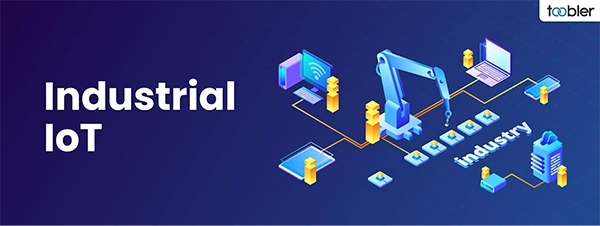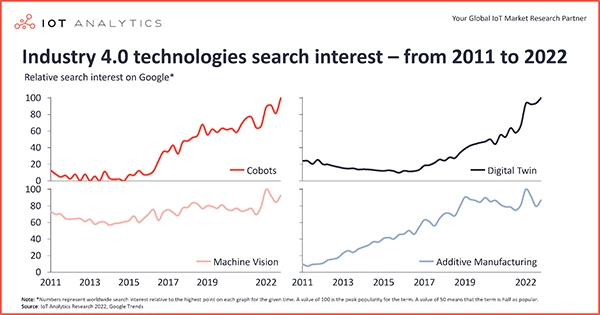Why Real-Time Data Pipelines Are Critical for Scaling IoT in Manufacturing

Did You Know?
The Internet of Things (IoT) is experiencing rapid growth, with the number of connected device is expected to cross 18 billion by the end of 2025. [Source: Statista]
As the IoT transforms the landscape, the necessity for real-time data processing is evolving from a luxury to an essential operational need. Connected factories depend on immediate insights for various functions, including predictive maintenance, quality control, and adaptive automation.
However, achieving this requires a strong and scalable data infrastructure, which is where real-time data pipelines play a crucial role. For software developers, data engineers, DevOps teams, and technical leaders involved in developing manufacturing systems, the challenge extends beyond merely gathering data from numerous sensors.
It includes effectively processing, evaluating, and reacting to that data on a scale, consistently, and in real-time. Want to explore deeply? Go through this article till the end, it will tell you the reason data pipelines are critical for scaling IoT in manufacturing.
KEY TAKEAWAYS
- The rapid influx of data from numerous connected devices necessitates real-time processing to ensure timely interventions and maintain operational efficiency.
- Effective real-time pipelines rely on event stream processing to enable immediate data analysis and action, ensuring reliable message delivery and supporting scalable, automated responses.
- Choosing the right event-handling platform is essential for balancing performance, resilience, and cost-effectiveness in business operations.
- Redpanda offers an efficient, cost-effective solution for real-time IoT pipeline monitoring in manufacturing.
- Manufacturers thrive in a time-sensitive environment, leveraging real-time data to enhance efficiency and minimize manual efforts.
The Stakes of Scaling IoT in Manufacturing
Modern manufacturing environments are dense with connected devices. There could be hundreds of sensors in a single facility that continuously provide telemetry on motor load, temperature, vibration, and other variables. Each data point can bring about a downstream action: adjusting a robotic arm, flagging a fault, or feeding into a machine learning predictive model. Prolong the delay by even a few seconds, and the potential for intervention could be lost.
Batch pipelines apparently can’t keep up with this pace. By the time data is reviewed, it may already be insignificant. In contrast, real-time pipelines empower systems to react without delay, which is especially critical for high-throughput, high-precision environments such as automotive or semiconductor manufacturing.
Event Stream Processing: The Backbone of Real-Time IoT
Any successful real-time pipeline must have event stream processing at its core. It enables algorithms to analyze, consume, and act on data as unique events rather than waiting for batches. In the Internet of Things, where data from various sources must be synchronized and assessed instantly, this is especially potent.
An event stream platform also serves as the intermediary between those edge devices and downstream consumers, guaranteeing that messages make it in order, are persisted reliably, and can be evaluated or replayed with minimal latency. Reactive, data-driven automation can be built at scale with these systems’ fault-tolerant storage and stringent ordering guarantees at the buffer level.
Evaluating the Right Platform: Performance vs. Cost
Selecting an appropriate event-handling platform is a crucial business decision that goes beyond technical considerations. Several evaluation variables must be weighed:
- Event volume and throughput: Can the devices ingest and process high-frequency impulses without choking?
- Fault tolerance: Is the system adapted to network partitions, node failures, and overload scenarios?
- Event processing complexity: Does the platform facilitate advanced use cases such as time-windowed aggregations or complex filtering?
It can be tempting to choose the solution that performs best on every metric, but doing so frequently leads to unaffordable infrastructure, particularly when scaled up. For extremely expensive manufacturing operations, a better technique is to select a platform that combines performance and resilience with economic efficiency.
A Modern Take: Redpanda’s Approach
Redpanda presents a compelling solution for continuously monitoring IoT pipelines in manufacturing. Although it is built in C++ and does not require a JVM, ZooKeeper, or external dependencies, it offers complete compatibility with the Kafka API. This represents simplified ops, lower resource consumption, and significantly reduced latency.
Redpanda is a good option for manufacturing teams looking to scale without going over budget because it provides up to 10x lower latency and up to 6x lower infrastructure costs when compared to traditional Kafka-based architectures. Its unique binary architecture is engineered for modern hardware, providing zero data loss, enterprise-grade consistency, and high availability even in demanding environments.
For DevOps teams and data engineers, this additionally means fewer moving parts to maintain. For technical leaders, it means more rapid detection times and better ROI from IoT investments.
Why Real-Time Matters for Competitive Advantage
From just-in-time production models to accountability reporting, manufacturers operate in an atmosphere where timing is all-encompassing. With the help of real-time pipelines, you can identify flaws as they appear, anticipate equipment failures before they happen, and precisely coordinate systems across facilities in less than a second.
Just as noteworthy, real-time data encourages closed-loop automation, where sensor values feed directly into customized control systems. Self-optimizing production lines are made possible by this, which continuously improve productivity and drastically reduce manual intervention—exactly what is required to compete on a global scale.
INTERESTING FACT
The Internet of Things (IoT) is rapidly transforming the manufacturing industry, with the market size estimated to reach $673.95 billion by 2032, exhibiting a noteworthy Compound Annual Growth Rate (CAGR) of 24.5%.

Final Takeaway
As IoT adoption in manufacturing gains traction, real-time data pipelines become increasingly important. They serve as the enabling layer that connects operational technology (OT) and IT, converting raw telemetry into actionable insight. But implementing these systems at scale will require more than speed; it demands low TCO, fault tolerance, and simplicity.
Ans: A real-time data pipeline helps in continuously processing and transferring data as it is generated, allowing for immediate analysis and action.
Ans: It ensures well-managed data volumes from more devices or sensors without performance degradation.
Ans: Data validation, cleaning, and standardization tools are some tools to help in improving data quality in real-time pipelines.
Ans: They enable continuous monitoring of operations, reduce downtime, and improve overall efficiency.
